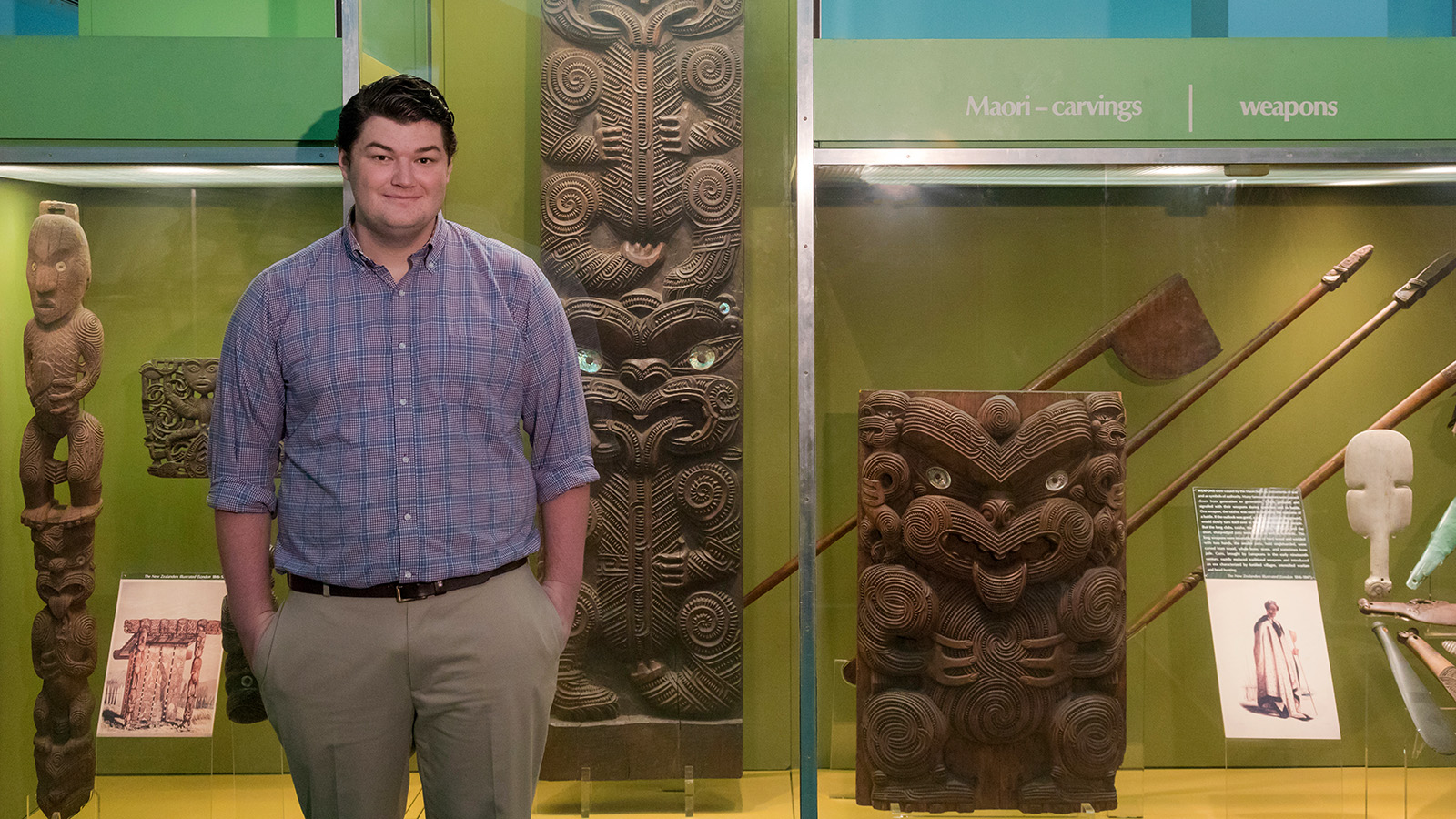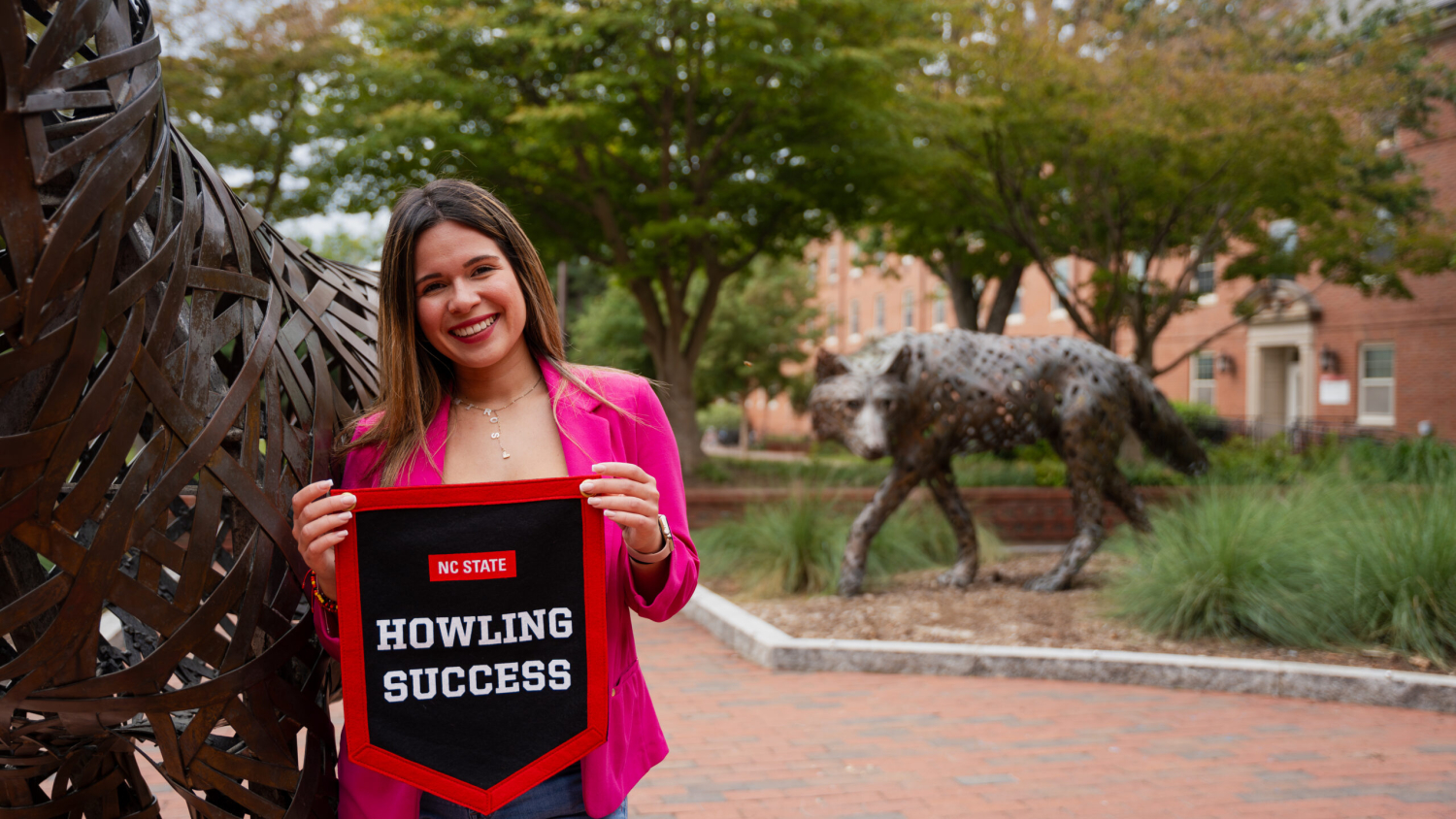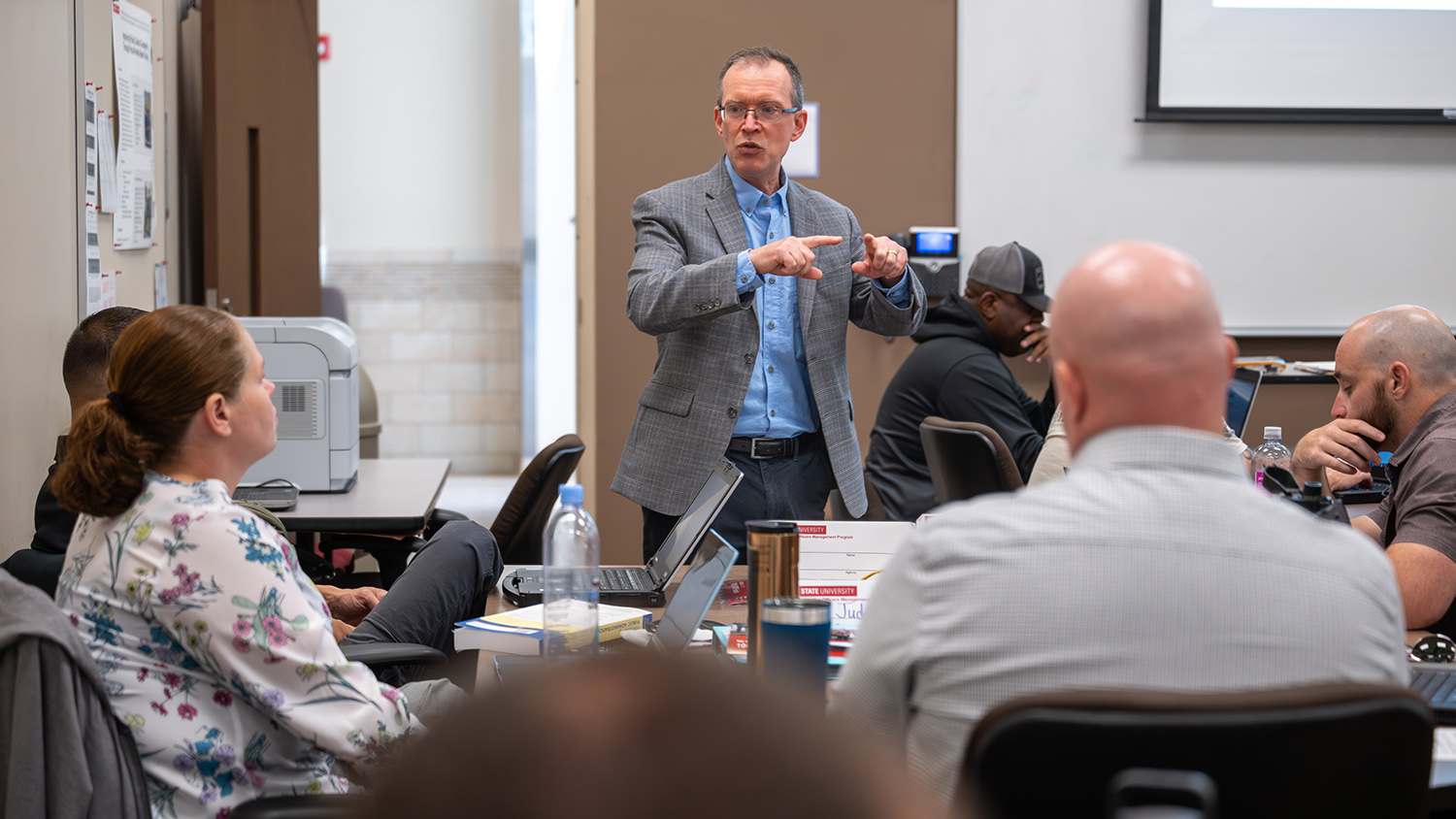Anthropology Major Spends Summer at NYC’s American Museum of Natural History

Colin Gravelle has come face to face with some unusual artifacts.
Working as a summer anthropology intern at the American Museum of Natural History in New York, Gravelle has researched and written about unique objects such as a vegetable caterpillar. The caterpillar, also known as āwheto, is a fungus historically used by the Māori people for tattooing.
During his internship, Gravelle has prepared curatorial notes for the vegetable caterpillar and several other objects included in the museum’s Pacific and African collections. The notes add historical and cultural context to lesser-known items, which are searchable in the museum’s online database. (Check out Colin’s write-up on the vegetable caterpillar.)
[spotlight-box label=”Degree Programs” img=”83002″ heading=”Anthropology at NC State” cta=”Learn More” url=”https://socant.chass.ncsu.edu/undergraduate/anthropology/”]Our bachelor of arts degree focuses on the interrelationships among the cultural, social and biological basis of human behavior in evolutionary and contemporary contexts.[/spotlight-box]
“My job is to research the history of the objects and what they literally are, so what they’re made of and where they’re from,” Gravelle says. “I also try to provide some cultural context — ‘Why is this object significant?’”
Gravelle has spent most of his internship writing about the Māori, the indigenous Polynesian people of New Zealand. Other memorable objects he’s noted include a tekoteko, a carving of an ancestral figure that would set on the table of a house. The specific tekoteko he documented happened to be one of the more notable items from the Pacific collection.
“I was walking into the museum one day and saw a picture of it hanging on the wall,” Gravelle says. “It was cool to say, ‘Hey, I’m writing about that!’
“I asked my adviser about it and she said, ‘Yeah, make sure you do a good job on that one.’ People have come from New Zealand to see this object.”
Stationed in the museum’s anthropology division, Gravelle has learned from experienced museum specialists who read his notes and offer feedback. He’s also interacted with artists and curators and took a short course on how to properly handle museum objects.
Gravelle grew up outside New York City and visited the museum many times as a kid. He remembers exploring a traveling King Tut exhibit on one of his birthdays. ‘It was a great birthday present,” he says.
The internship has given him a new perspective of the museum as well as the courses he’s taken at NC State: Cultural Anthropology, Archaeology and Physical Anthropology, among others. Gravelle is majoring in anthropology and plans to add a second major in psychology as well.
[pullquote color=’green’ align=’right’]I feel like I’ve not only learned a lot about cultures like the Māori, but also the overarching field itself.[/pullquote]
“What’s most similar to class is the sense of what you’re writing,” Gravelle says. “From my classes, I’ve learned a lot about how to interact with these cultures in a way that’s respectful and academic. It’s very easy to come across as condescending, which is the opposite of what you want to do.”
On campus, Gravelle is a Humanities and Social Sciences scholarship recipient and a member of the University Scholars Program. He has participated in the Anthropology Club and has also worked with the Shelton Leadership Center.
Gravelle says he’s still mulling his ideal path after college, adding that the internship has opened his eyes to new possibilities.
“Anthropology is a massive field,” he says. “So, for me, I feel like I’ve not only learned a lot about cultures like the Māori, but also the overarching field itself.”


